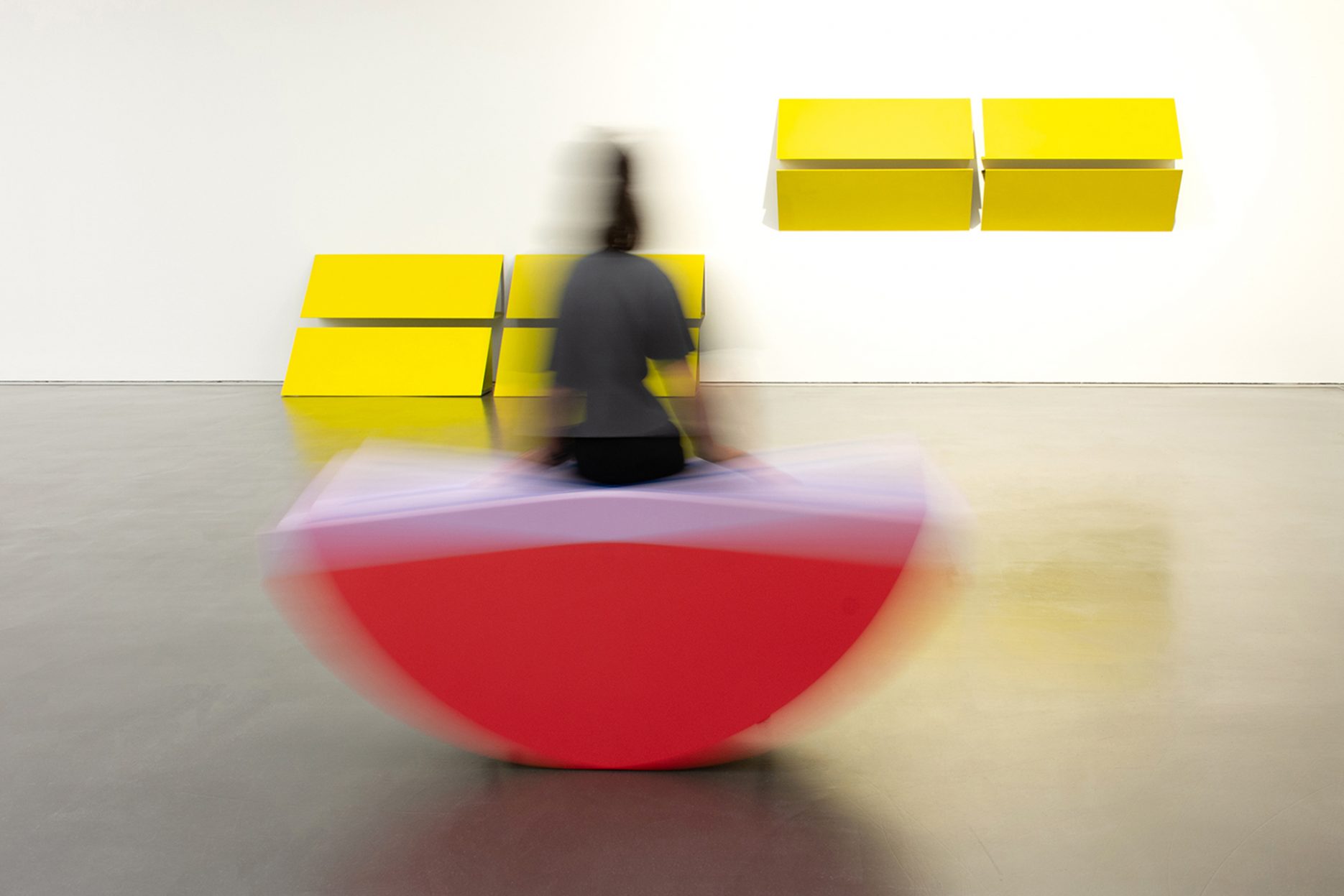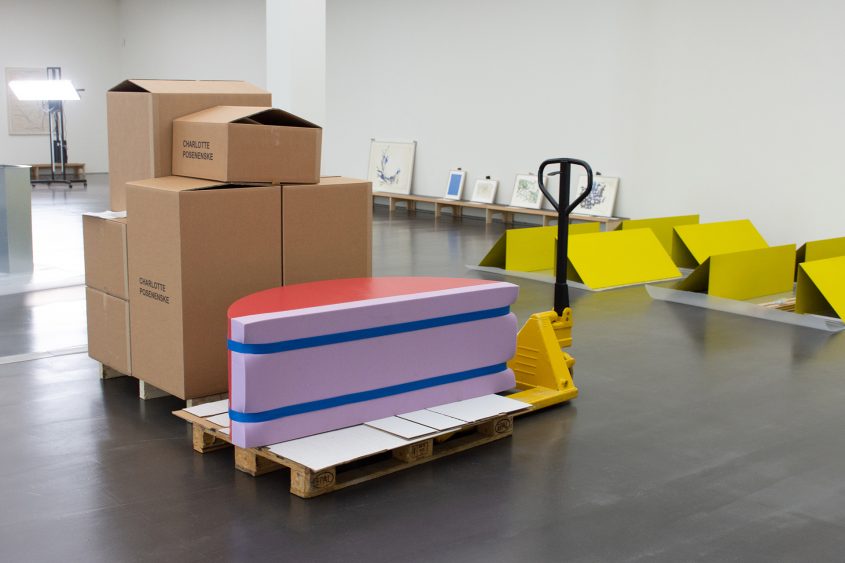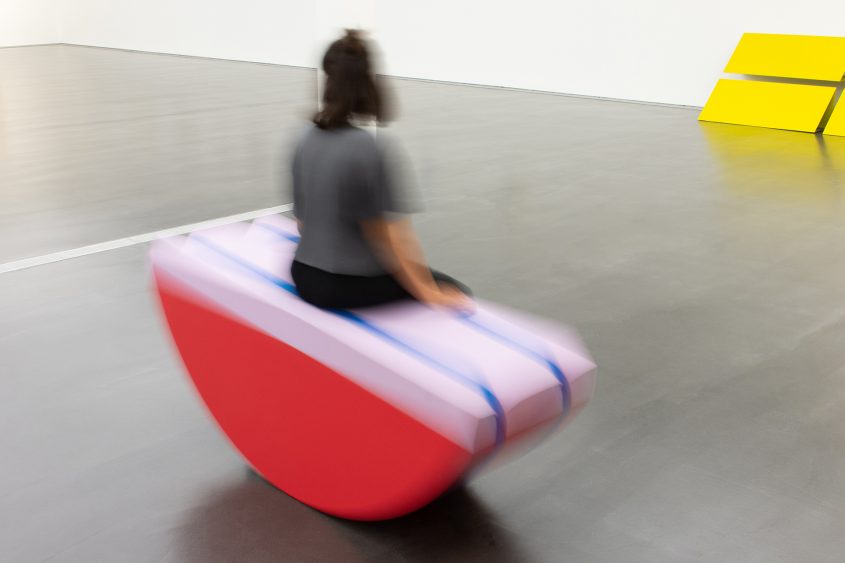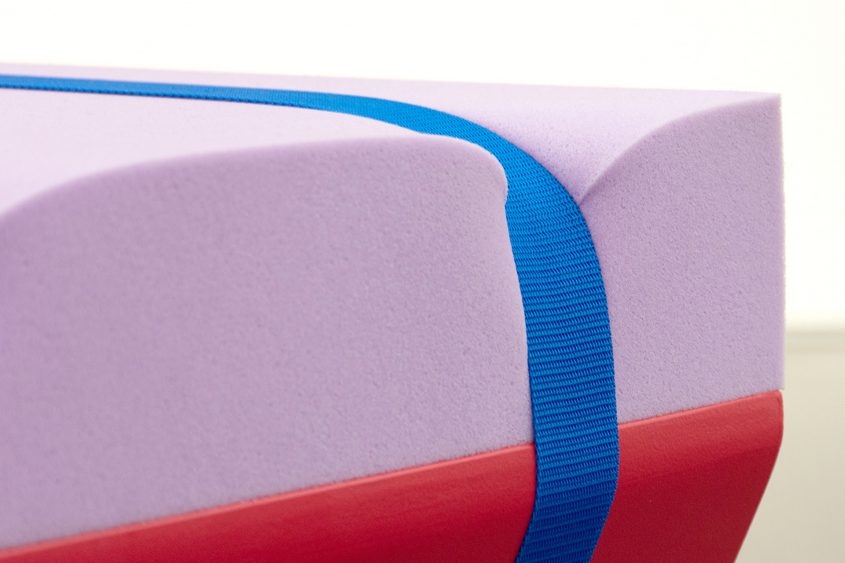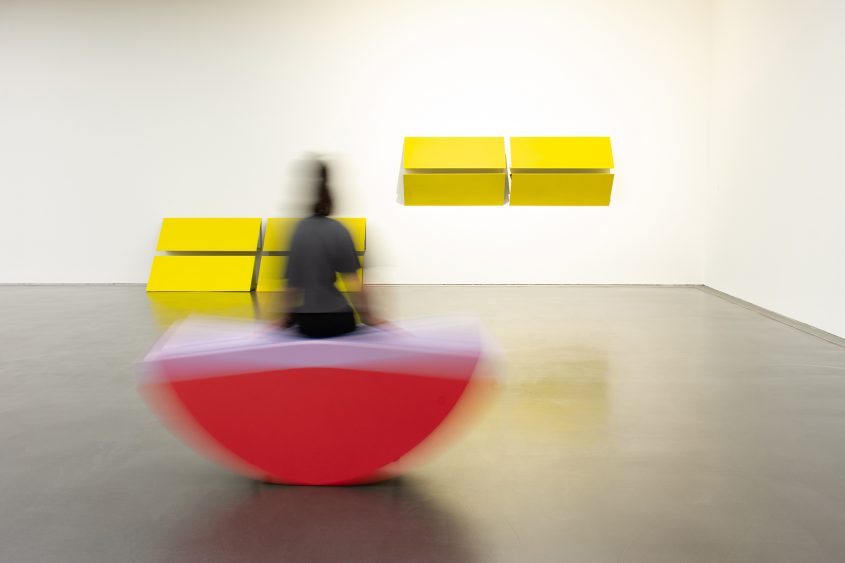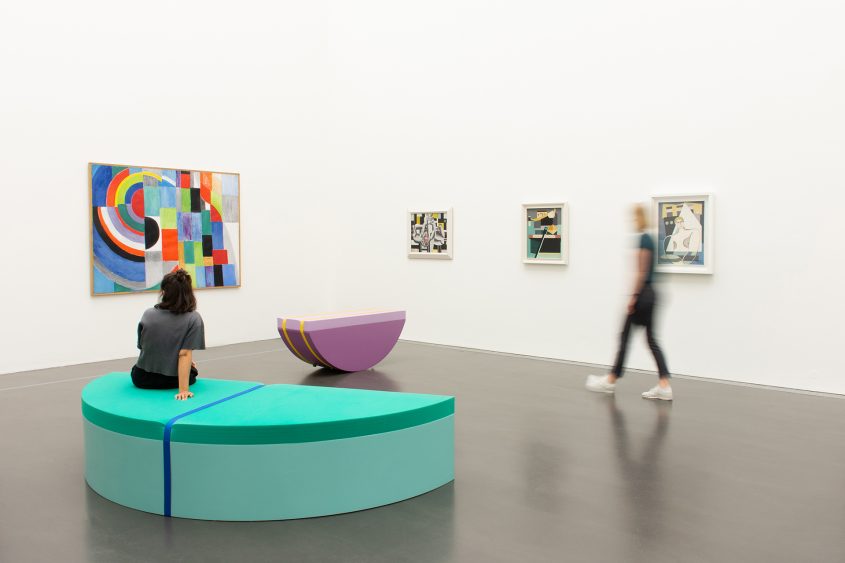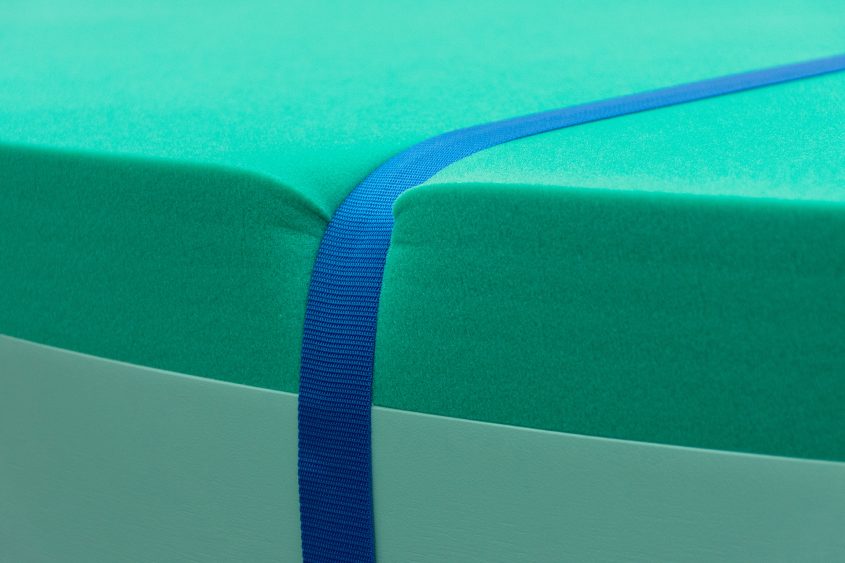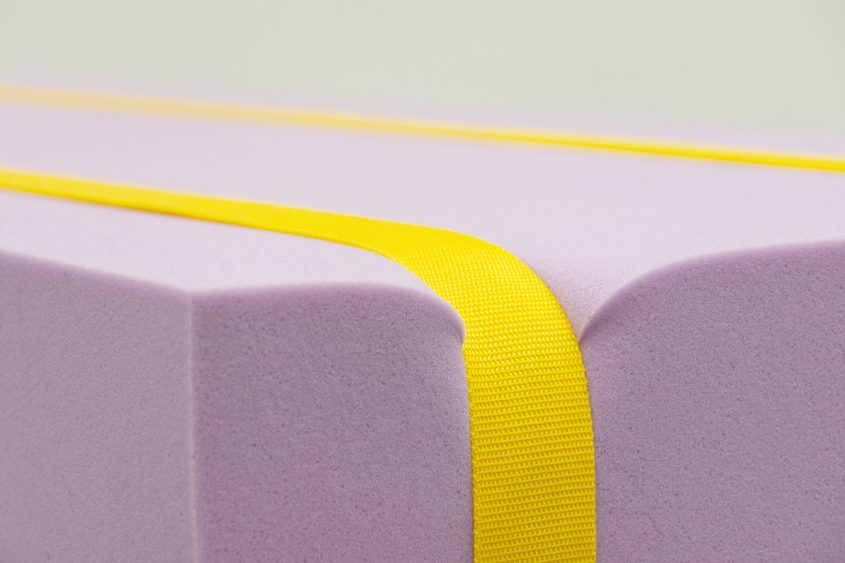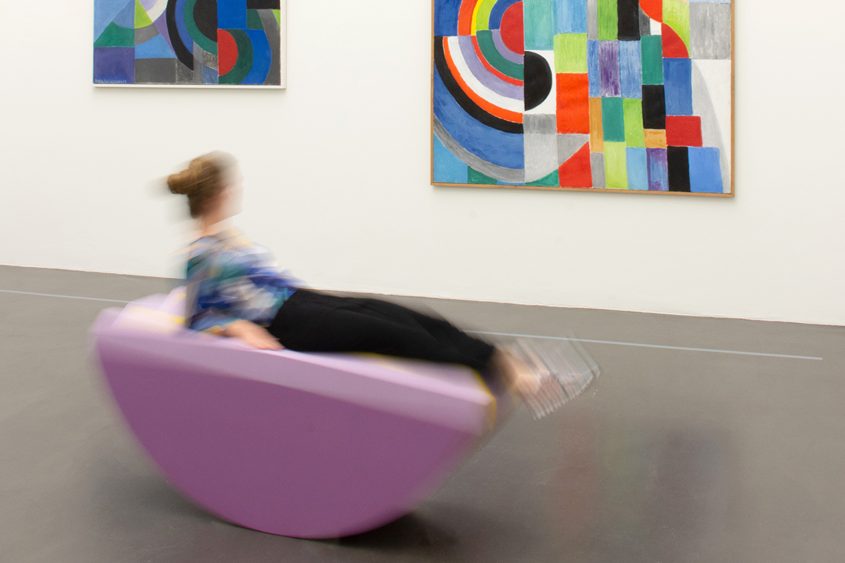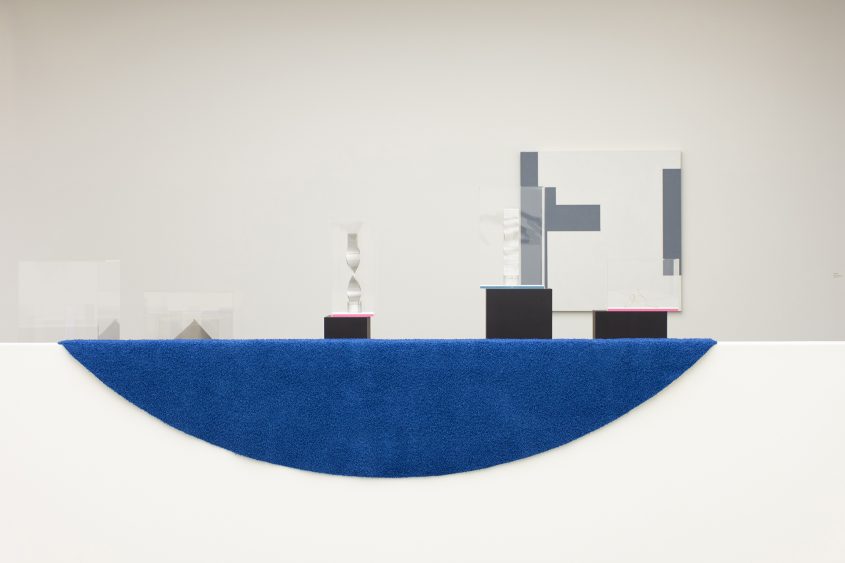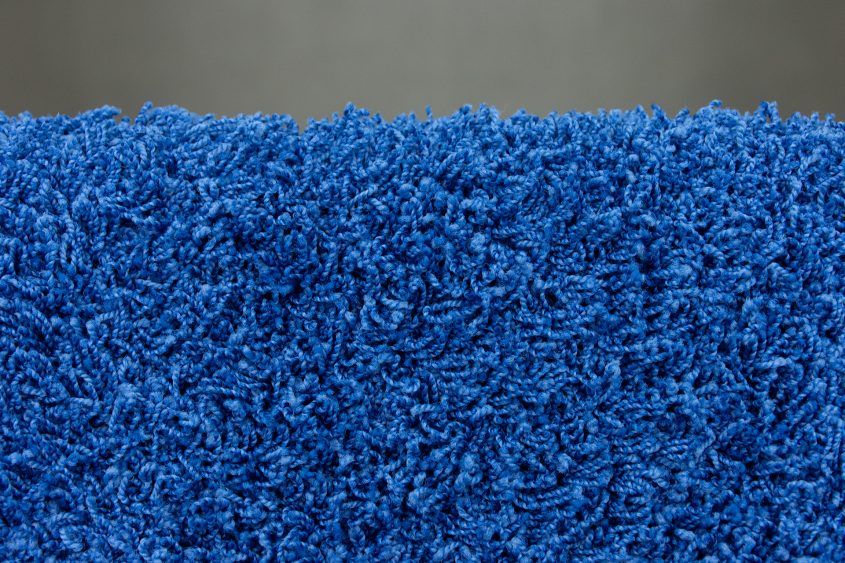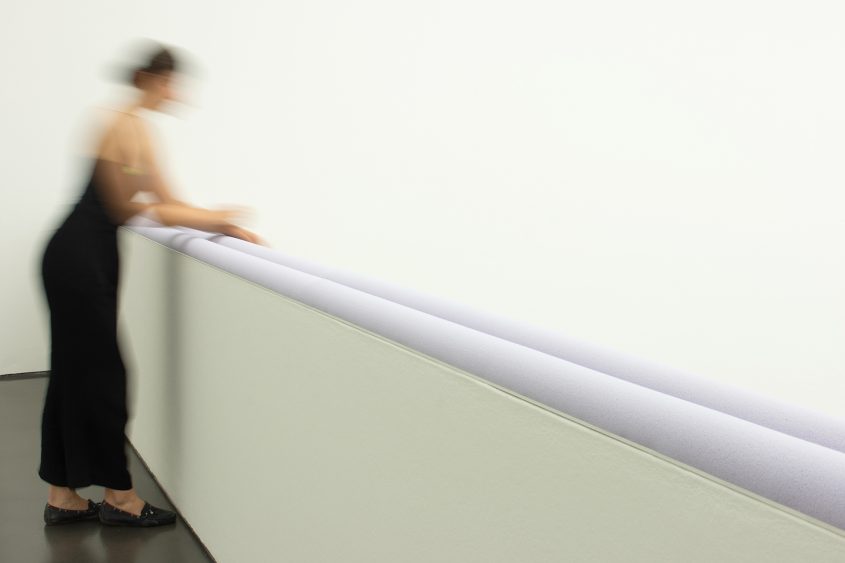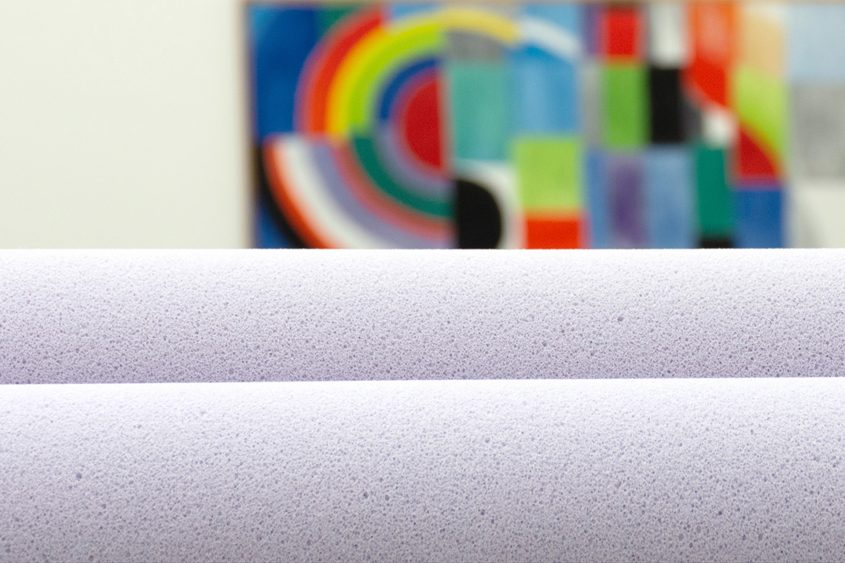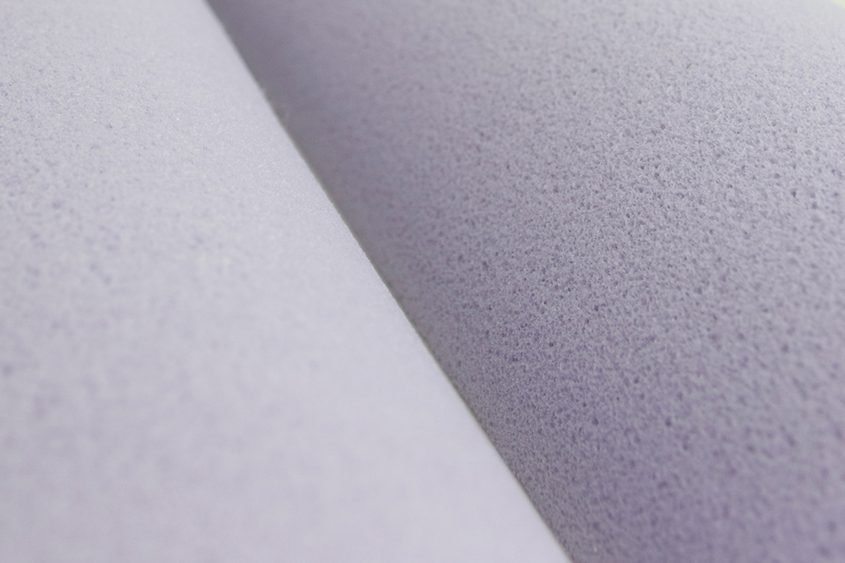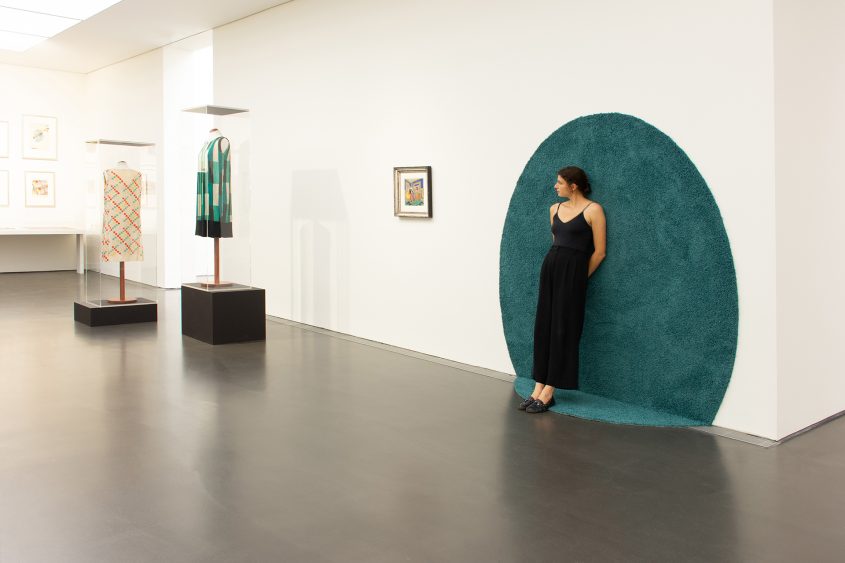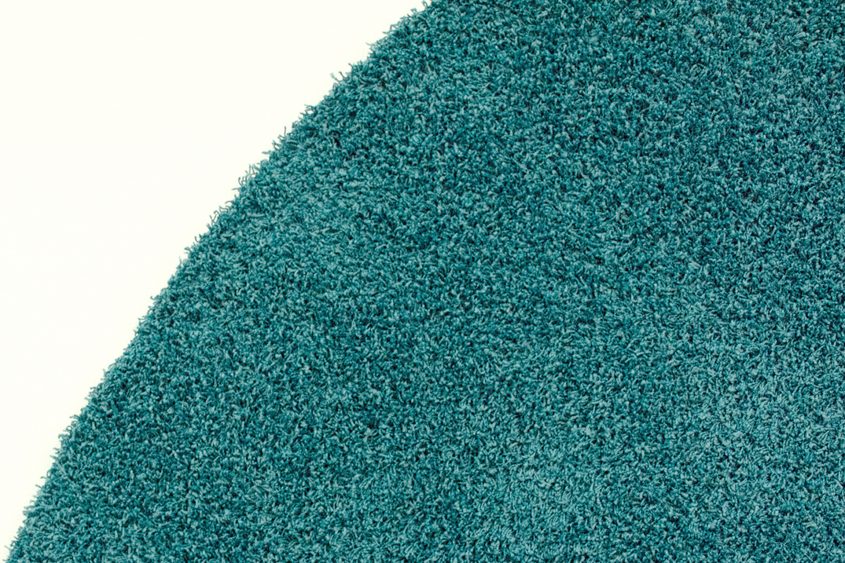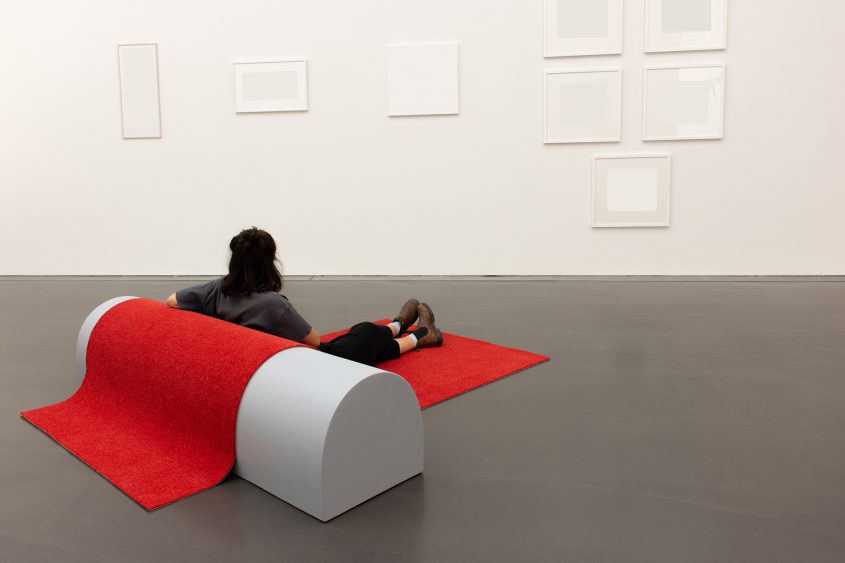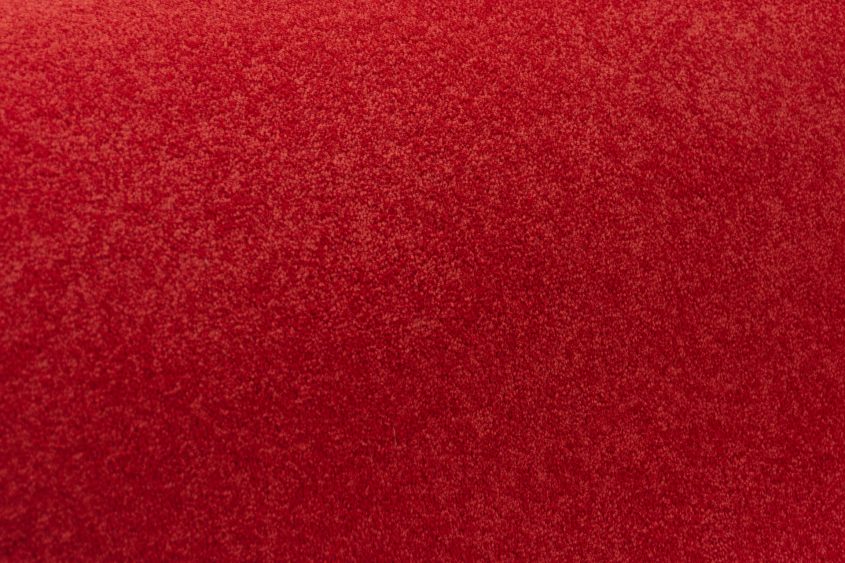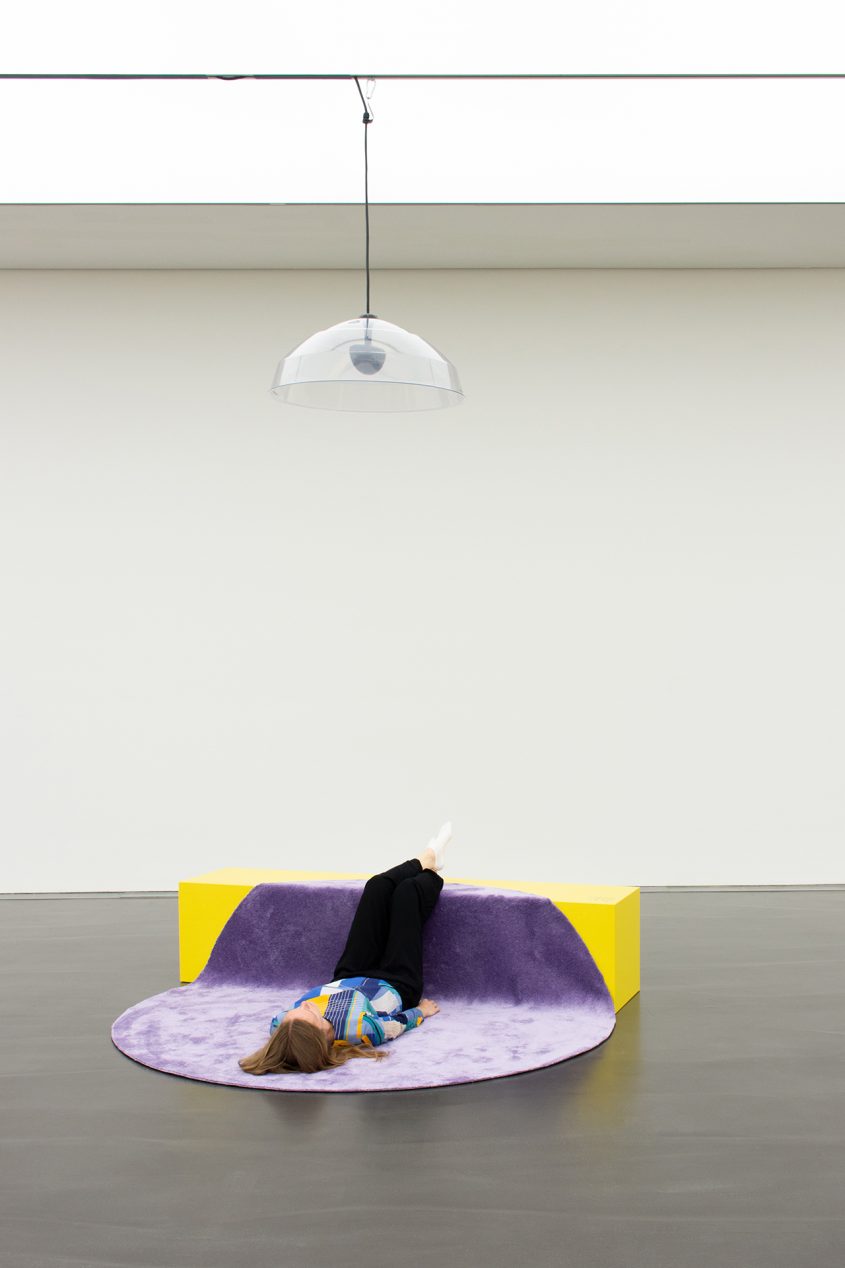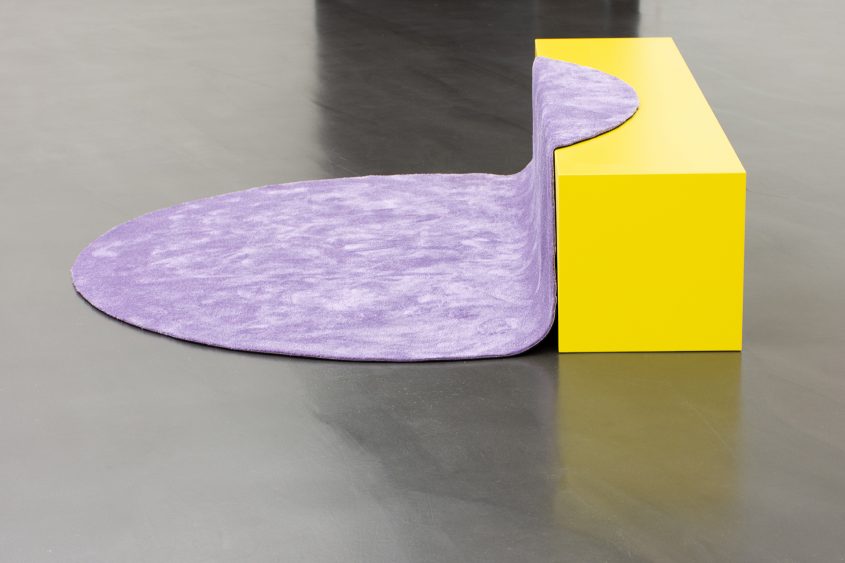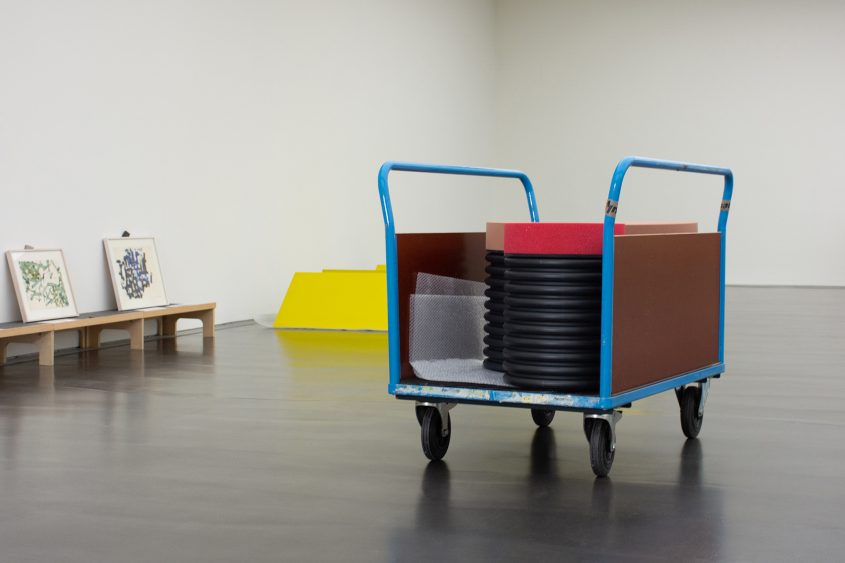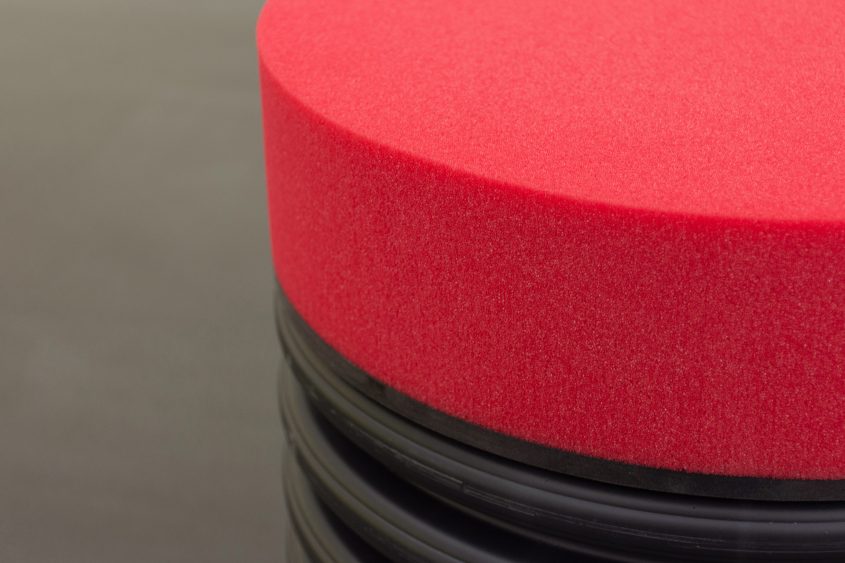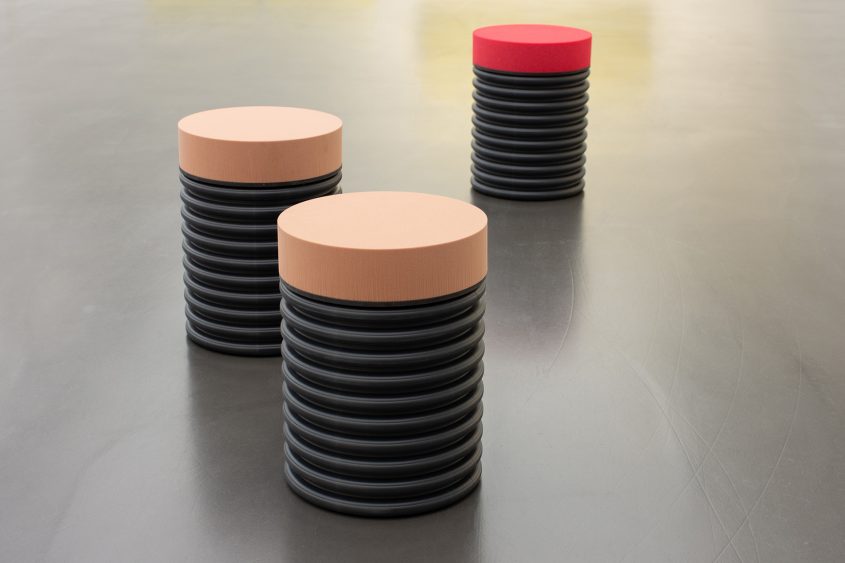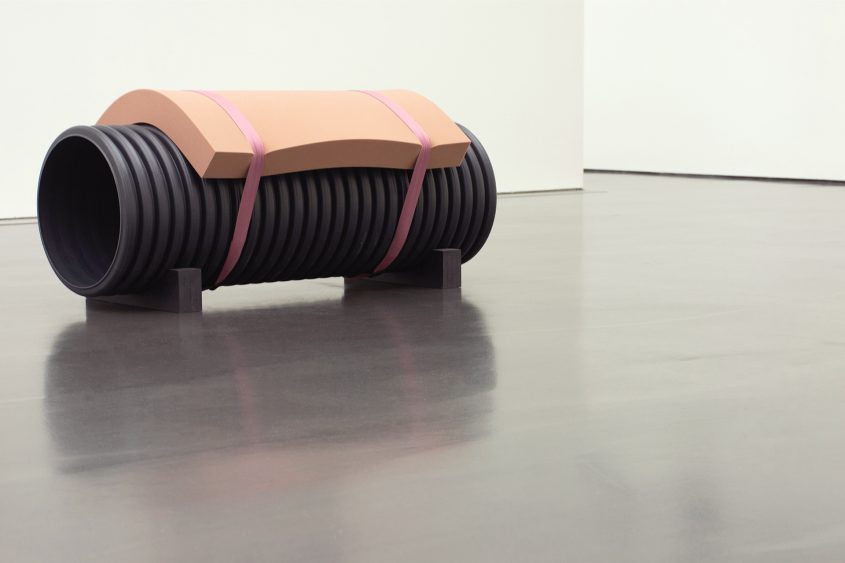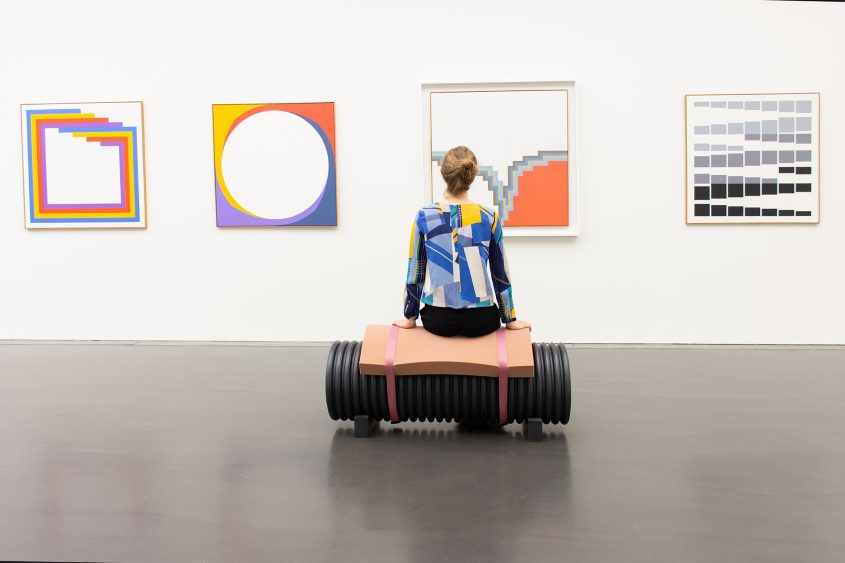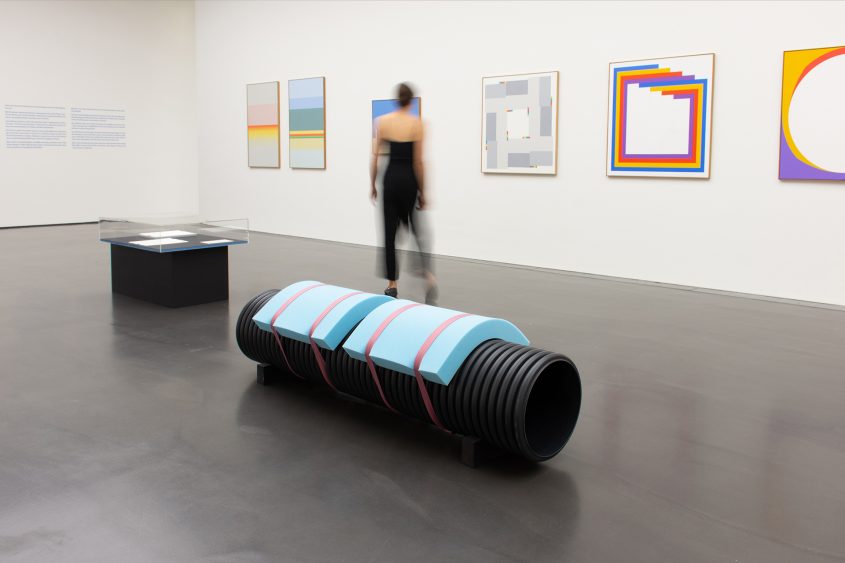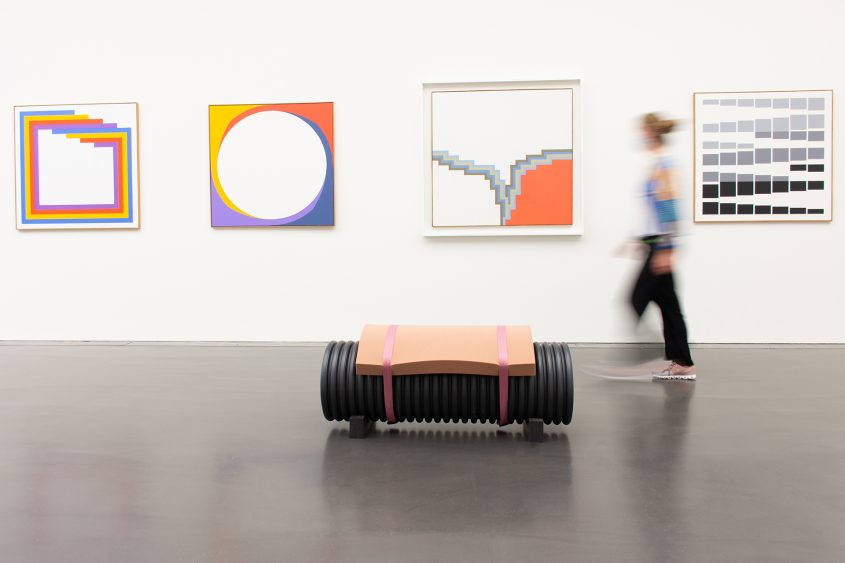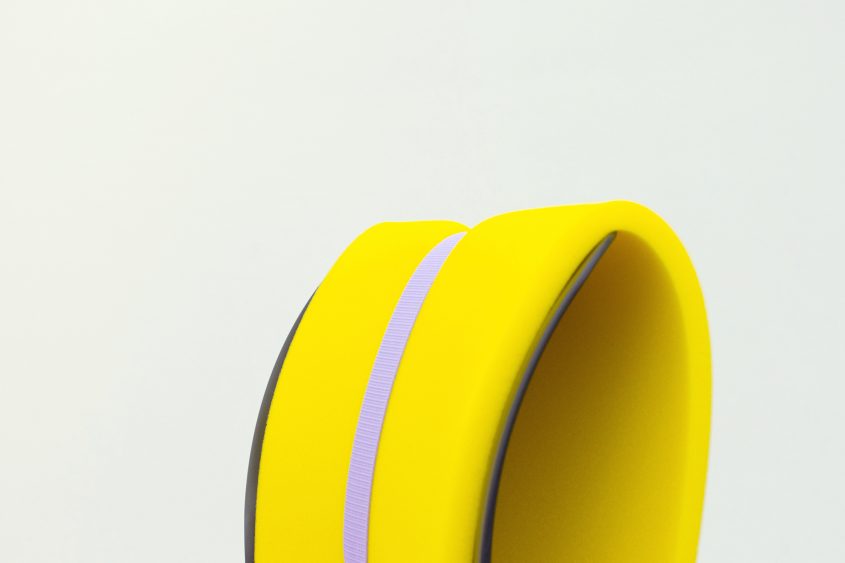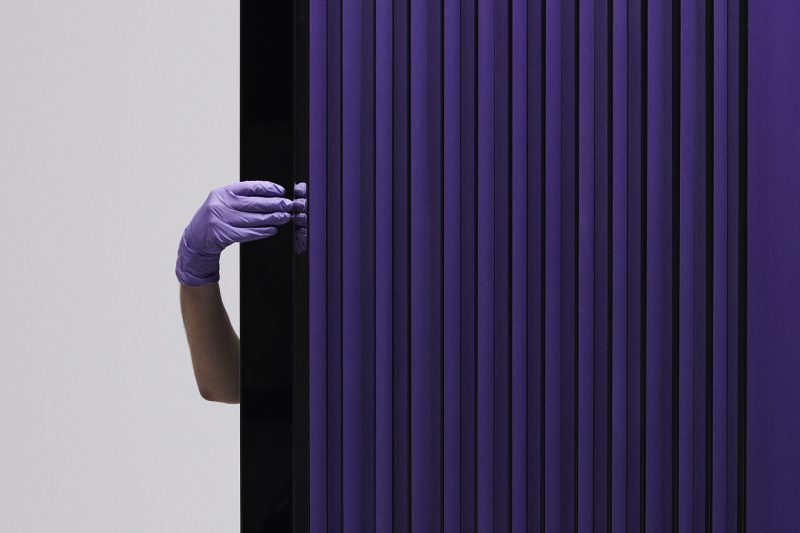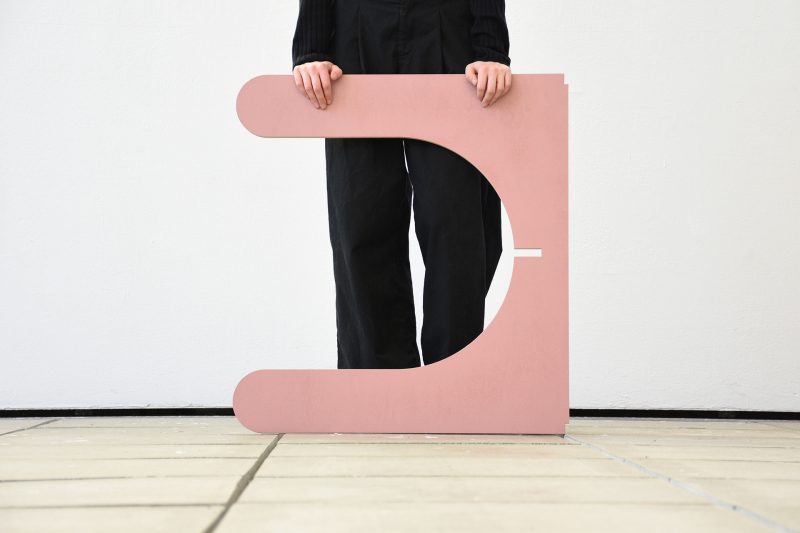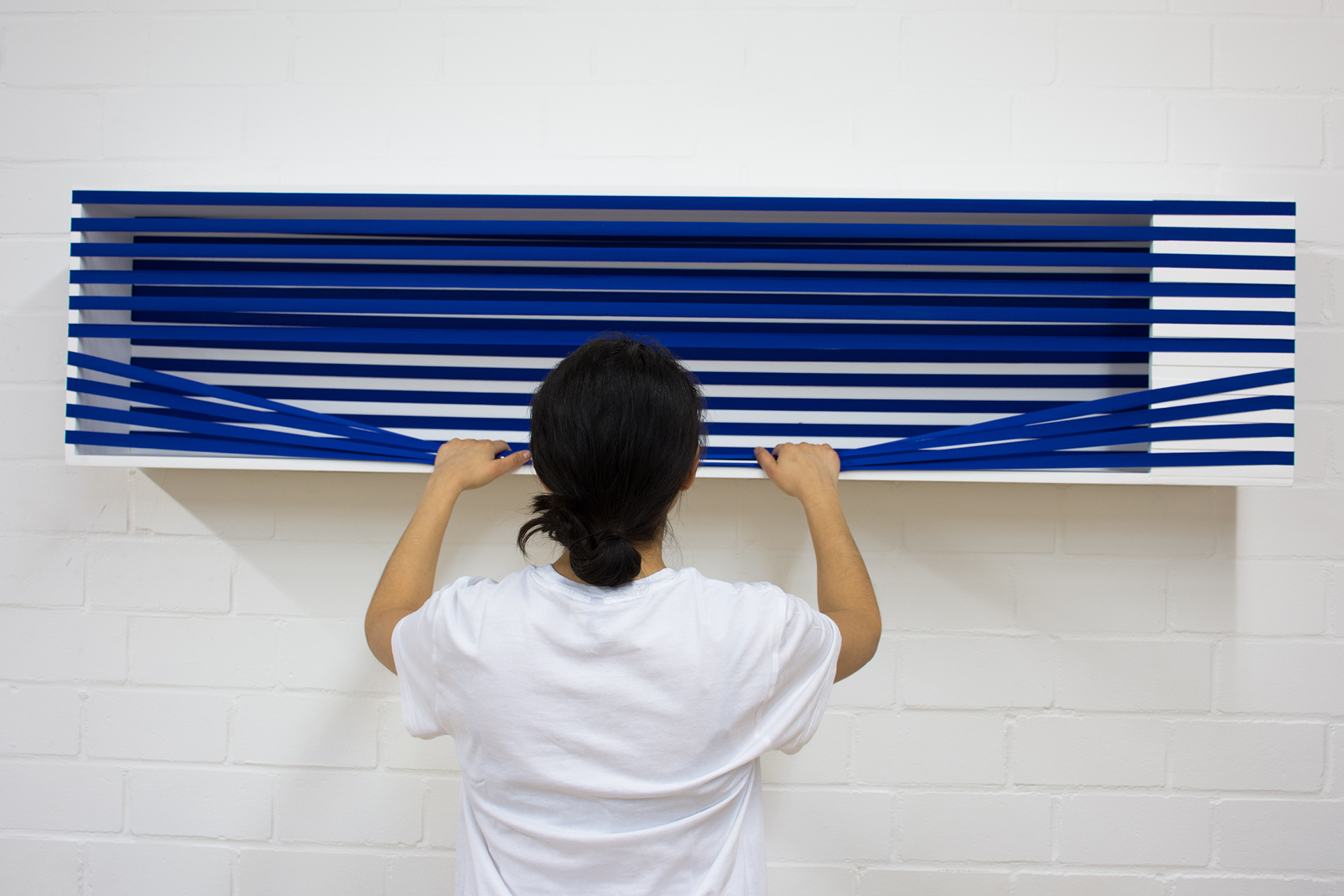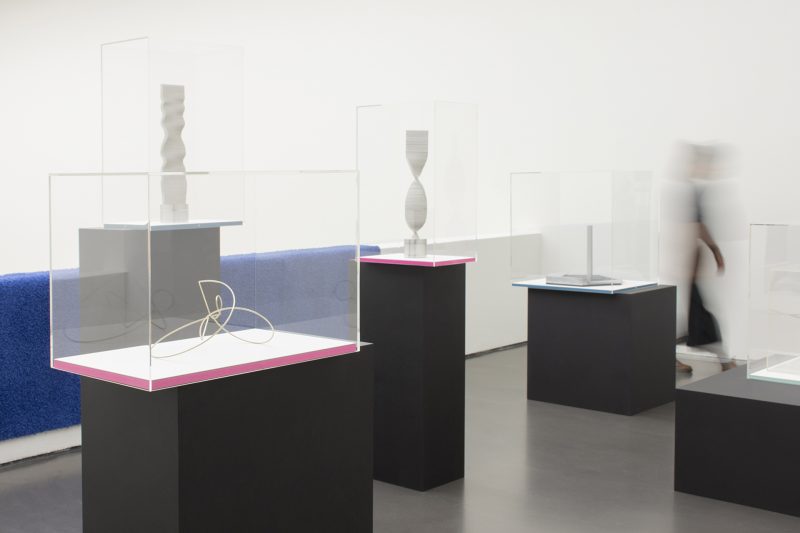„How do we experience art in a museum?“
With this question in mind, our interdisciplinary design team, consisting of architects, textile designers and me as an industrial designer, is starting the collaborative exhibition design project with the Kunstmuseum Stuttgart. For the scenographic design of the exhibition „zwischen system&intuition: KONKRETE KÜNSTLERINNEN“ we are designing scenographic furniture and showcase landscapes.
Striking repeating forms and colours are extracted from the artworks. Graphic elements of the exhibited artworks are further translated into a catalogue of colours, forms and materials to be used in the exhibition furniture. The „actors of scenography“ we designed to accompany the exhibited artworks as an independent part of the exhibition. The furniture refers to the colour and form character of the exhibited works and expands them with tactile-visual qualities. Seating elements and showcases are our answer to the question of how we experience art in a museum.
The exhibition architecture of the designed scenographical furniture and showcase landscapes can be experienced in the context of the exhibition „zwischen system&intuition – Konkrete Künstlerinnen“ from 26.06.2021 to 17.10.2021 in the Cube of the Kunstmuseum Stuttgart.
Concept Design
Benjamin Rose, Isabella Silva Altemani, Julia Klawitter and Kathrin Alischer.
Design Development and Realisation
Nele Esteban Dettmar, Lucy Ann Guth, Katharina Trilken and Kathrin Alischer.
Supervision
Prof. Veronika Aumann, AM Karin Schulte, Prof. Tobias Walliser. State Academy of Fine Arts and Design Stuttgart.
The core of my work as an industrial designer within this interdisciplinary group project lies in art direction, concept development, colour and material design such as product photography.
Konkrete Kunst is characterised by its clear colouring as well as the focus on surfaces, forms and materiality. The exhibited artworks primarily consist of paintings and sculptures; in addition, there is one sound artwork as well as lightboxes. So many details can be discovered and one is tempted to get even closer to the works of art.
But beware! Only have a look! Do not touch!
As is customary in art museums, a safe distance must be kept, and the artworks are protected from dust, moisture and the visitors‘ touch.
Disconnectedness between visitors and art pieces motivates us to design museum furniture that enables a closer experience of colour, surface and form in relation to the artworks. The designed seating elements go beyond the everyday understanding of sitting and invite visitors to engage in an active way. Visitors are encouraged to lean against the wall, lie on the floor, swing back and forth, discover connections between the artworks and put themselves in the perspective of the artists.
The visual character of the Konkrete Kunst can be experienced tactilely through the materials used in the furniture design. The colours and shapes extracted from the artworks and implemented in the furniture can be touched and thus stimulate the sense of touch, which promotes a broader understanding of the paintings. The textile surface of the carpet invites visitors to lean against it and gives them time to focus on the artwork facing them.
In addition to the design of visual-tactile properties, we make use of the phenomenon of shifted perspective. Visitors are for example invited to view artworks down from the floor or while looking down from the second floor. Through this created shift of viewing angle, visitors may discover unexpected details of the drawings.
As the exhibited textiles are protected behind glass cases, the textile character of the clothes cannot be experienced by visitors. The textile structure and colour of the clothes are translated into a round tapestry. By redesigning the museum furniture, a closeness to the exhibited artworks can be created, as tactile properties are otherwise hidden behind glass cases.
The designed scenographical furniture include stools, benches, floor and wall carpets as well as hybrid seating objects. The furniture provides opportunities to stop and observe. Imagine visitors lying on a carpet instead of sitting on a bench.
Through the designed furniture, we want to encourage visitors to pause for a moment. The seating elements thus become protagonists of the scenography, breaking down the strict character of the museum and creating a space in which the dynamics of the colours, shapes and materials of the artworks can be experienced. The hybrid carpet-bench object offers the visitor a space to experience the recorded sound artworks.
The scenographical furniture provide areas that allow visitors to gain a conscious insight into the world of the Konkrete Künstlerinnen. The designed seating elements are central, as they pick up on the graphic language of colour and form and make it directly accessible to the visitor, not only by looking at but actually by touching.
Based on the way of thinking of Konkrete Kunst, honest and untreated materials such as foam, tension belts and plastic tubes are applied. These materials are combined in different product types. The stool and the bench each consist of a black tube from the construction industry, which is covered with coloured foam.
The re-design of seating as an experience is furthermore applied to the supervisors‘ chairs. The standard black chairs are covered with coloured foam. The supervisory staff is thus integrated as part of the exhibition.
Carpet sponsoring @ OBJECT CARPET GmbH
Foam production @ W. Dimer GmbH
Acrylic glass @ kad Kunststoff Acryl Design GmbH
Showcases @ Die Schreinerei MUNY GmbH
